An apple a day keeps the doctor away -- and it also makes for a pretty boring fruit routine.
Why not shake things up and try a nutritious fruit or veggie you may have never even seen before? We rounded up some of the most absurd-looking produce we could find and in the process discovered some with enticing health perks. Check out some of our favorites in the slideshow below. Then tell us in the comments if you've ever tried any of these!
1
Cherimoya
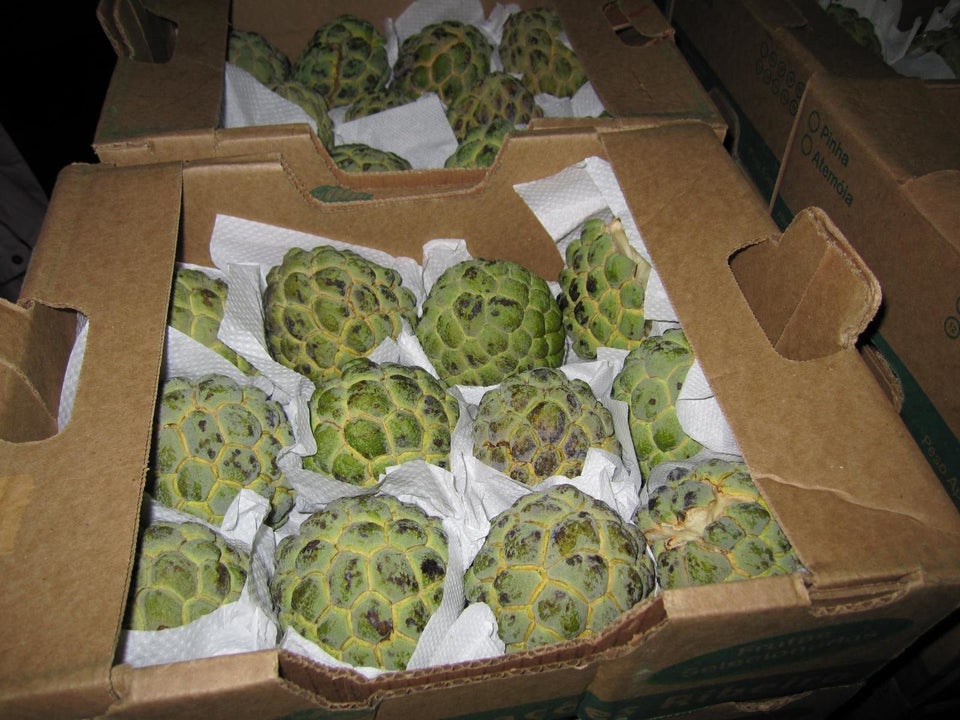
Don't be thrown off by the scaly skin -- the exterior of this heart-shaped green fruit isn't for eating. Once ripe (it will feel soft to the touch), the skin turns brown, ABC News reported, and inside will be a creamy flesh that gives the cherimoya its nickname, the custard apple. The fruit tastes like a cross between a banana and a pineapple, according to Mother Nature Network. (Don't eat the black seeds, either.) It boasts more fiber than an apple with seven grams per fruit, and it packs 60 percent of your daily recommended vitamin C to boot.
2
Star Fruit
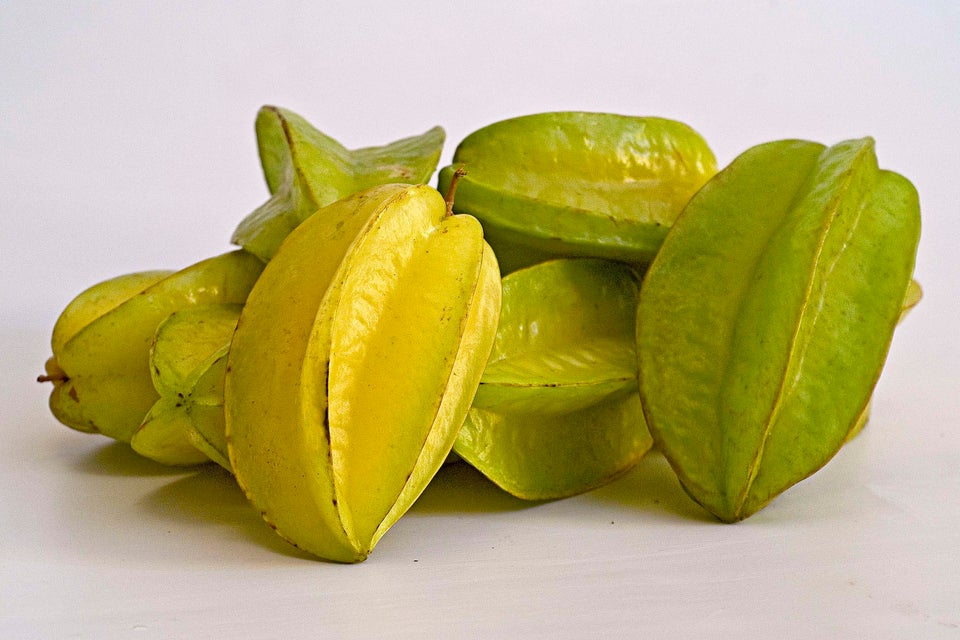
Technically called the carambola, this tropical fruit is more commonly known as the star fruit, thanks to the shape of its slices. It can add tart flavor to seafood or meat dishes, registered dietitian Mira Ilic told Woman's Day, and makes a tasty jam or chutney.Fresh, a medium-sized fruit packs only 28 calories, plus some potassium, fiber and more than half your daily recommended vitamin C, with the watery goodness of a watermelon and the crunch of a cucumber, ABC News reported.
3
Kumquats
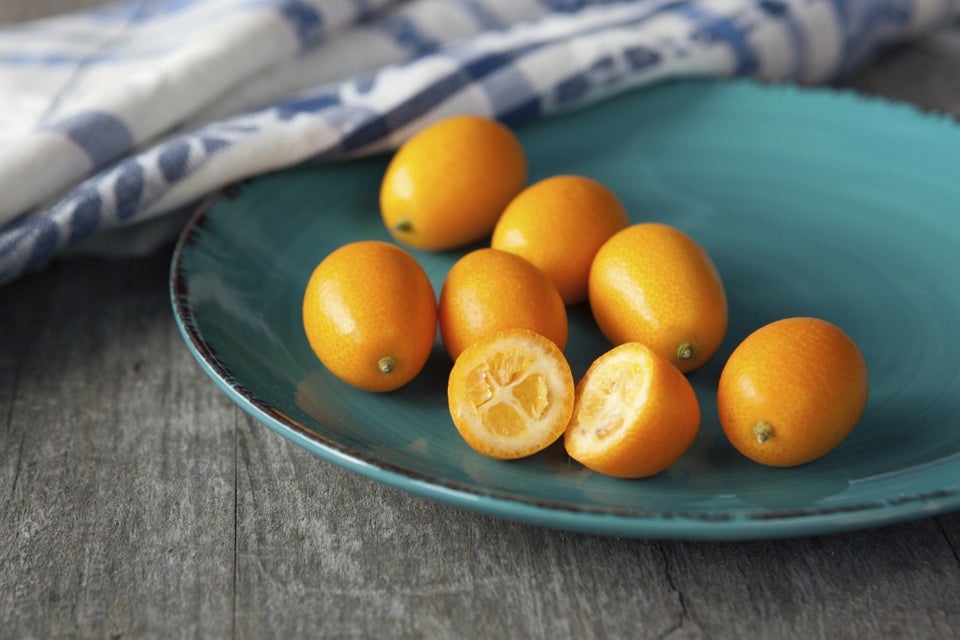
Metkalova via Getty Images
Who shrunk the oranges?! These miniature bites may look cute, but they pack serious flavor in that tiny package. While they appear to be in the citrus family, some botanists classify them as Fortunella instead, NPR reported. Still, they share similar health benefits with lip-puckering citrus, namely vitamin C and fiber -- especially since you can eat the whole thing, rind and all. Just stay away from the "candied" variety; the syrupy sugar added to mitigate that natural tartness really only adds empty calories. Try kumquats sliced raw into salads or cooked into a chutney for seafood or meat dishes, NPR suggests.
Advertisement
4
Dragonfruit
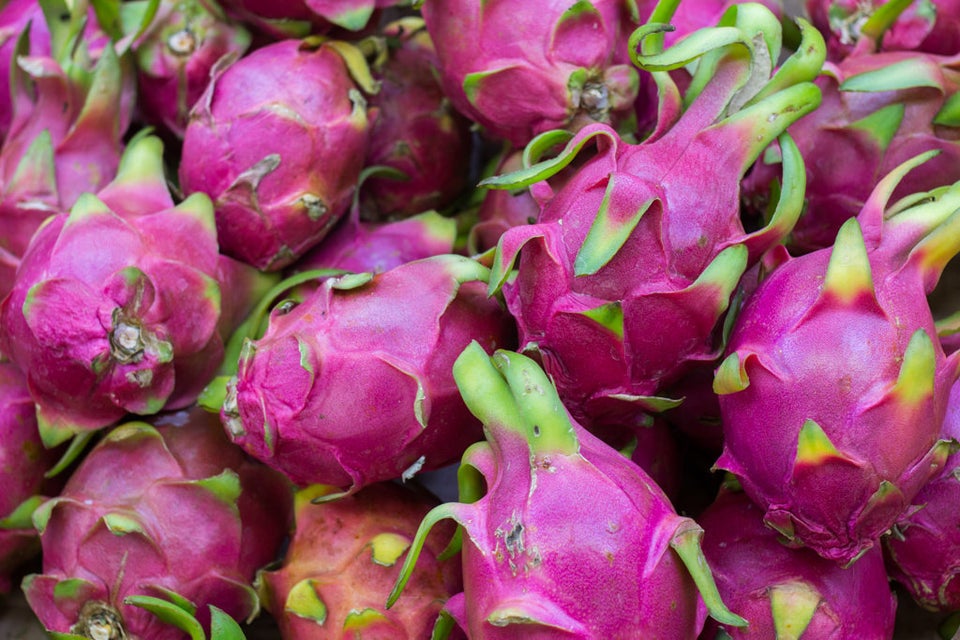
Technically called a pitaya or pitahaya, this cactus -- yes, cactus! -- is a hot-pink showstopper. "From the outside the fruit looks like a hot pink bulb ringed with a jester's crown of curly greenish petals," The New York Times wrote in 2011:
Slice it open, and there's a white (or, on rare occasions, fuchsia) scoop of sweet pulp speckled with tiny black seeds. Either way, it suggests an Easter bonnet that Cruella de Vil might wear in a drag remake of "101 Dalmatians."Its taste, however, is much less flashy, which is why dragon fruit is often added to dishes (or drinks) with "soft" flavors, according to the Times, like strawberry or even rose petal. It's rich in fiber and antioxidants, CBS reported, and may contain some healthy pre-biotics.
5
Buddha's Hand
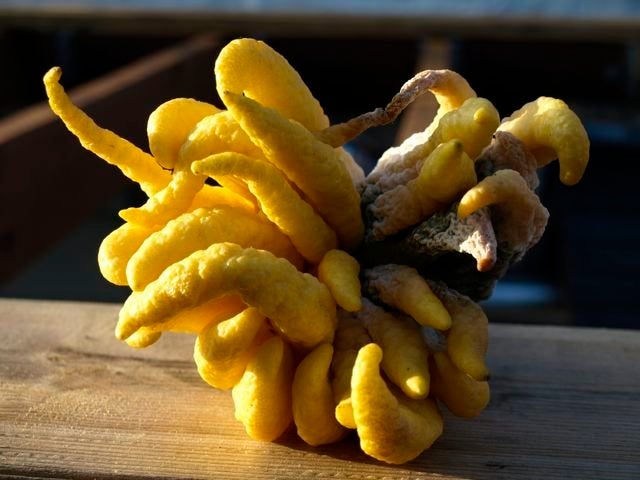
This finger-like fruit has a lemony taste without the pulpy texture of citrus. The rind works well for zesting, registered dietitian Jennifer Dimitriou told Woman's Day, since it packs even more flavor than a more traditional citrus fruit. Plus, it's loaded with vitamin C. Just one tablespoon provides 13 percent of your daily recommended intake.
6
Kiwano
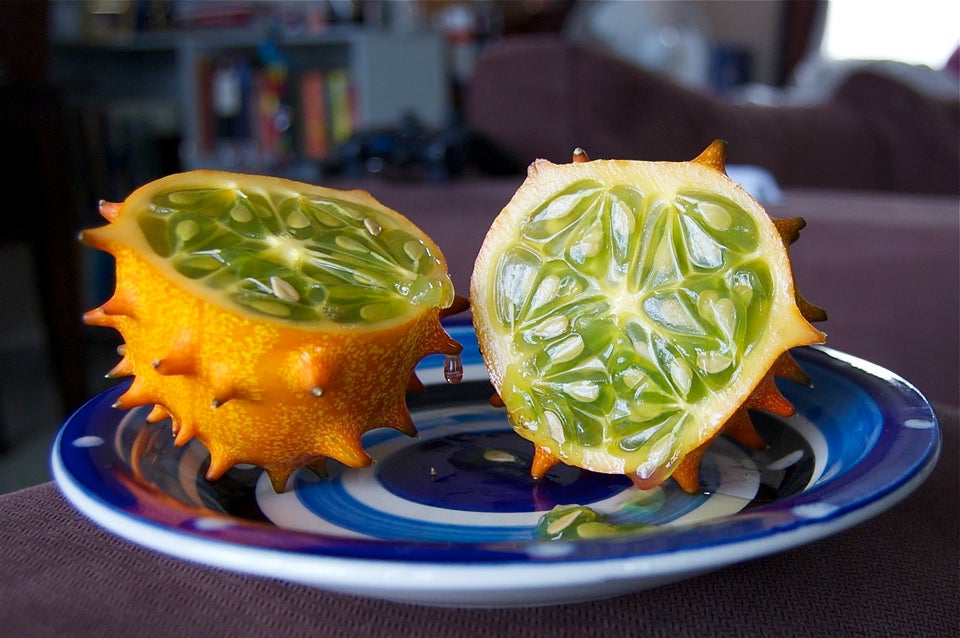
This spiky fruit could pass for a video game hazard. Also known as a horned melon or an African horned cucumber (or "blowfish fruit," for obvious reasons), you only eat the juicy green insides, which taste like a mix of zucchini, cucumber, kiwi and banana, according to Woman's Day and Mother Nature Network. Since the fruit is mostly water, kiwano can help keep you hydrated on a hot day, especially since it's rich in potassium. The fruit also boasts vitamins A and C and some iron.
Advertisement
7
Jackfruit

The largest fruit to grow on trees can reach up to 80 pounds(!), according to Mother Nature Network. Described as having a "buttery flesh," jackfruit is somewhat starchy and makes for tasty homemade chips. A number of curry recipes call for the fruit, although it can also be eaten raw, the Village Voice reported. It's a good source of vitamin C and manganese, a mineral found in the bones, liver, kidneys and pancreas that is also essential for brain and nerve function.
8
Rambutan
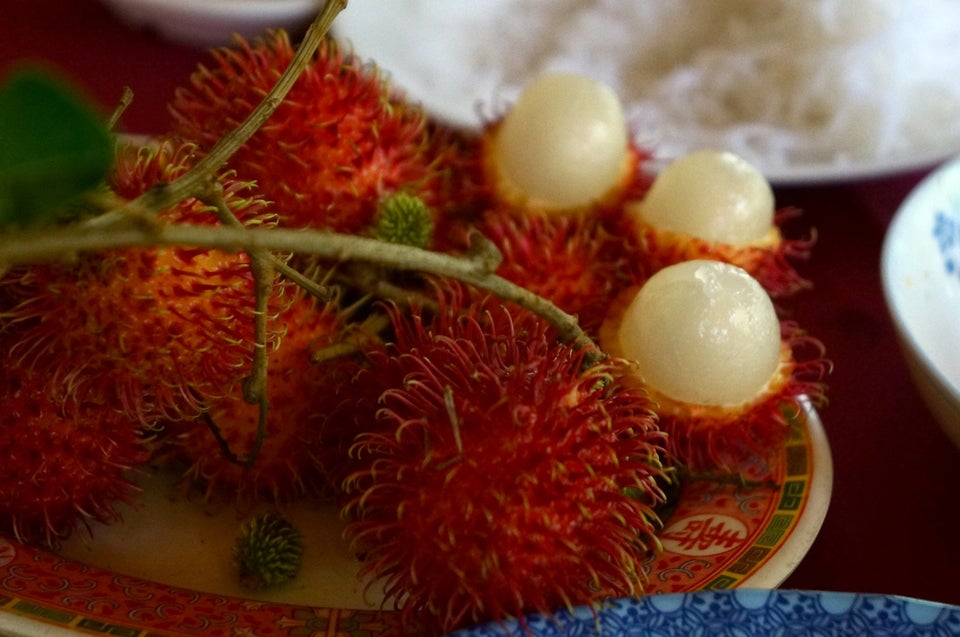
This lesser-known relative of the lychee deserves a share of the spotlight. The grape-like flesh can be eaten raw right out of the anemone-looking exterior -- just discard the seed. The fruit contains some vitamin C, iron and manganese, but beware canned varieties which may be packed in sugary syrup.
9
Mangosteen
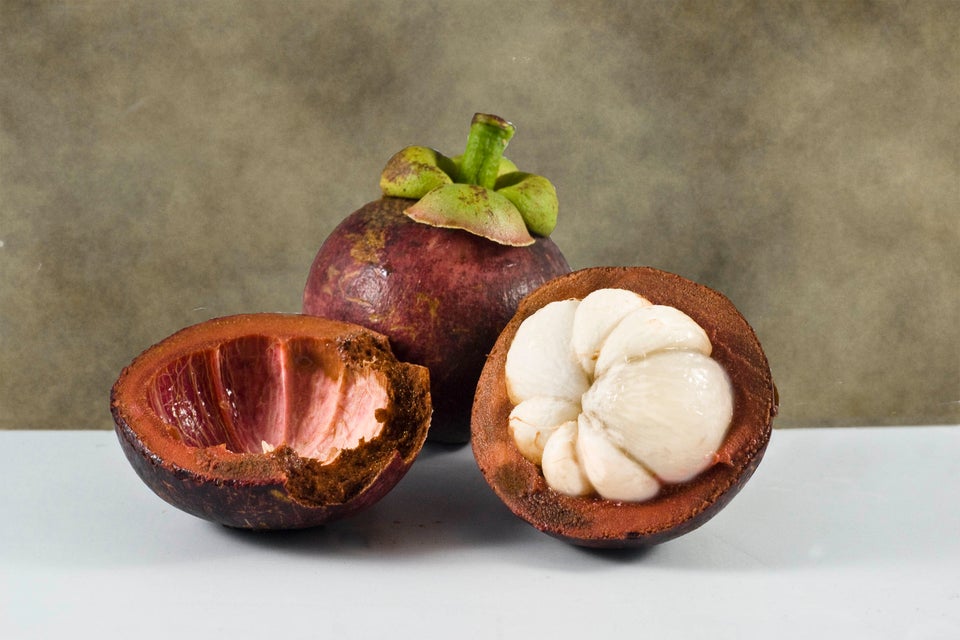
Underneath that tough shell, the fruit of the mangosteen is "sweet, tangy, citrusy and peachy," according to Mother Nature Network. It packs some fiber, iron and vitamin C and is a good source of folate, a B vitamin especially important for pregnant women. It can carry a hefty price tag fresh, but keep in mind that canned versions often are packed in syrup (read: sugar).
Advertisement
10
Turmeric Root

Alamy
You've probably come across it in powdered form on your spice rack, but that turmeric actually starts out as a pretty gnarly looking root. It will take a little grinding or grating, but you can toss it into any number of dishes (or even smoothies) to reap a number of health benefits.Those perks are likely due to curcumin, the active ingredient in turmeric, which acts as a powerful antioxidant. There's some research to suggest curcumin could help fight off some types of cancer, arthritis and even Alzheimer's disease, among other ailments, according to the American Cancer Society. Like other herbs and spices, turmeric is a way to add lots of flavor without lots of calories, salt or fat.